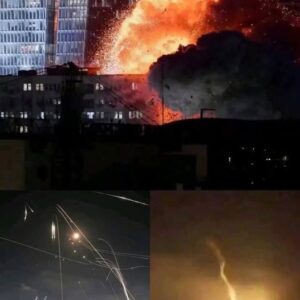The Geopolitical Fallout: What the Trump–Zelenskyy Clash Reveals
The tense exchange between Donald Trump and Volodymyr Zelenskyy is more than a diplomatic spat — it’s a window into the shifting architecture of post-war geopolitics.
For Ukraine, the stakes are existential. For Washington, they are ideological. For the rest of the world, the moment signals how quickly alliances can evolve when fatigue, domestic politics, and strategic realignments collide.
1. A Turning Point in U.S. Policy Toward Ukraine
If reports from The Financial Times are accurate, Trump’s message to Zelenskyy marks the most explicit U.S. acknowledgment yet of “war-fatigue diplomacy.”
The White House’s suggestion that Ukraine “stop where they are” effectively endorses a frozen conflict — a de facto partition that leaves Russia holding parts of the Donbas and possibly Crimea.
Strategically, such a move would resemble the Korean armistice model: the fighting halts, borders harden, but peace remains incomplete. It’s a pragmatic solution for Washington — but a painful one for Kyiv, which would be forced to trade territory for survival.
Analysts note that this position is also deeply transactional, consistent with Trump’s long-standing worldview: peace as negotiation, not principle; strength as leverage, not alliance.
2. The Return of “America First” Realism
Trump’s reluctance to send Tomahawk missiles fits neatly into his broader philosophy of selective engagement. His remarks — “We’d much rather have the war be over” — echo a populist realism: the belief that American intervention abroad must serve immediate, measurable U.S. interests.
Supporters of this stance argue that America’s resources are finite and should be guarded. Critics counter that such restraint risks emboldening aggressors and fracturing the trust of allies who depend on U.S. resolve.
Either way, the meeting underscored a shift from the moral language of “defending democracy” toward the economic language of national stockpiles, costs, and limits.
3. The Human and Symbolic Cost
Zelenskyy entered the Oval Office not only as a wartime leader but as the moral face of resistance against tyranny. Trump, by contrast, carried the burden of balancing American fatigue with geopolitical pressure.
Their confrontation embodied two different moral frameworks:
-
Zelenskyy’s moral appeal: the belief that freedom must be defended regardless of cost.
-
Trump’s pragmatic calculus: the belief that stability and strength matter more than moral clarity.
Both perspectives contain truth — yet their collision reveals the widening gap between principle and power in modern politics.
4. The European Response
European diplomats described the meeting as “alarming.” According to reports, one EU official said Trump’s tone was “blunt to the point of humiliation.”
The fear in Brussels is that Washington’s new approach could force Europe into the uncomfortable position of mediator between its own ally and its own conscience — balancing security interests with a moral commitment to Ukraine’s sovereignty.
Already, Germany and France have begun exploring alternative frameworks for reconstruction aid and long-term defense guarantees that would reduce Ukraine’s reliance on U.S. decisions.
5. What Lies Ahead
The path forward now depends on whether Trump’s proposal — effectively a frontline freeze — evolves into policy or remains rhetoric.
If it becomes official, it could end the bloodshed in the short term but leave Ukraine geopolitically crippled and Russia emboldened.
If Zelenskyy resists, as he has vowed to do, the world may witness a diplomatic standoff as consequential as the conflict itself — one that tests the durability of Western unity more than any battlefield ever could.
Power often hides its exhaustion behind the word peace.
But true peace is not the absence of war — it’s the presence of justice.
The challenge before the world is to discern whether the current call for “an end to bloodshed” is an act of wisdom or weariness.
Because how leaders end wars often defines what kind of peace their children inherit.





